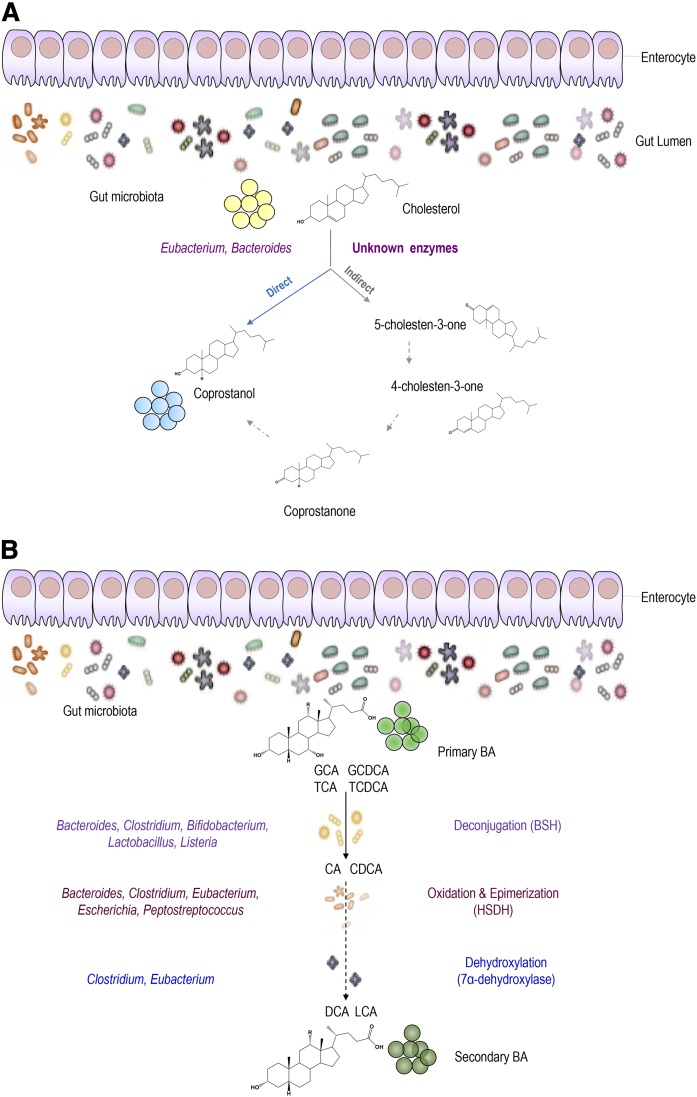Fig. 2.
A: Bacterial conversion of cholesterol into coprostanol. Two major pathways are proposed for the conversion of cholesterol to coprostanol. The first pathway involves direct reduction of the 5,6-double bond. The second pathway starts with the oxidation of the 3β-hydroxy group and isomerization of the double bond to yield 4-cholesten-3-one, which undergoes two reductions to form coprostanone and then coprostanol. The main bacterial taxa carrying such a reaction involve Eubacterium and Bacteroides. However, bacterial enzymes are still unknown. B: Bacterial BA modifications in the host GIT. In the intestine, microbial enzymes from gut bacteria metabolize primary BAs into secondary BAs. Glyco-conjugated and tauro-conjugated CA and CDCA are first deconjugated via BSHs, epimerized, and then 7α-dehydroxylated to form secondary BAs (DCA and LCA). The main bacterial genera involved in BA metabolism include Bacteroides, Clostridium, Bifidobacterium, Lactobacillus, and Listeria in BA deconjugation; Bacteroides, Clostridium, Eubacterium, and Peptostreptococcus in the oxidation and epimerization of hydroxyl groups at C3, C7 and C12; Clostridium and Eubacterium in 7-dehydroxylation; and Clostridium and Fusobacterium in desulfation. GCA, glycocholic acid; TCA, taurocholic acid; GCDCA, glycochenodeoxycholic acid; TCDCA, taurochenodeoxycholic acid.

